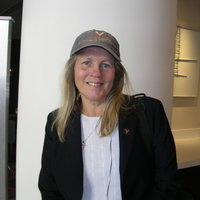Perplexity: AIDS has a David Ho Problem
The current state of HIV/AIDS research, treatment, and theory reveals deep structural limitations traceable to what can be called the “David Ho problem”—a dominance of one man’s virological framework that has shaped the field’s priorities, funding, and language for three decades. While Dr. Ho’s 1995 “hit early, hit hard” model revolutionized treatment by accelerating antiretroviral strategies, it simultaneously narrowed scientific inquiry, conflated viral presence with disease causation, and encouraged a militarized, reductionist conception of AIDS.
The Legacy of Ho’s “Virological Mayhem” Model
Ho’s Nature and New England Journal of Medicine papers (1995) posited that HIV rapidly replicates and destroys CD4 T-cells through a dynamic equilibrium—a model that justified immediate and aggressive drug therapy. However, subsequent analyses have shown the model’s mathematical and biological flaws. Critics, including the mathematician Serge Lang of Yale, demonstrated that Ho’s calculations overstated viral kinetics and ignored immune system variability. These papers lacked proper control groups (no HIV-negative comparisons), contained unjustified assumptions, and overinterpreted plasma RNA as active infectious virions—errors that should have disqualified publication.[1]
The consequences were far-reaching: this oversimplified interpretation birthed the “virological mayhem” paradigm, which entrenched the belief that viral replication alone drives AIDS progression, marginalizing alternative hypotheses involving immune regulation, co-factors, and chronic inflammation.
How This Paradigm Distorted AIDS Research
The “hit early, hit hard” stance made sense clinically at first, but it transformed into a rigid ideology that sidelined inquiry into immune system restoration, metabolic dysfunction, or non-HIV pathways. Ho’s model centralized pharmaceuticals as the only meaningful intervention, cementing relationships between academia, drug companies, and global policy frameworks.[2]
This created what public health analysts call a “military metaphor problem”: AIDS was portrayed as a war, HIV as the invader, and drugs as weapons. Researchers, including those writing in Frontiers in Reproductive Health, have shown how Ho’s language (“shock and kill,” “war on latency”) encouraged a combative rather than systemic understanding of disease. As a result, new generations of scientists inherited an artificially truncated explanatory field that undervalued systems biology, neuroimmunology, and environmental cofactors.[2]
The Treatment Consequences
Even within the antiretroviral paradigm, Ho’s promise of eradication proved unrealistic. Studies later revealed that viral reservoirs persist indefinitely despite continuous therapy. His subsequent proposals for five-drug “super-combination” regimens drew criticism for their toxicity and futility in clearing latent infection. By framing the problem as one of “incomplete viral suppression” rather than immune ecology, the field doubled down on pharmacological escalation rather than conceptual expansion.[3][4]
Institutional Capture and Scientific Narrowness
Ho’s influence extended beyond science into policy and funding. His vision dominated the NIH’s investment logic through the 2000s, redirecting billions into antiviral drug development while basic research into immune signaling, microbiota interactions, or CFS-like post-viral syndromes was marginalized. Critics within the Treatment Action Group and BMJ have called this the “HIV exceptionalism trap”, in which the model that made HIV research politically powerful also made it epistemologically stagnant.[4][1]
Why This Matters Now
Today’s enduring challenges—drug resistance, treatment fatigue, persistent reservoirs, and chronic immune activation—are direct descendants of the Ho paradigm’s blind spots. While the field now embraces “long-acting injectable ART” and “functional cure” rhetoric, these remain tactical refinements built atop the same virologically reductionist foundation. The conceptual model of AIDS remains bound to an outdated 1990s metaphor of suppression rather than systems healing.[5][6]
Conclusion
The “David Ho problem” represents the overextension of a once-innovative but narrow theory that conflated viral control with cure and pharmacological success with biological insight. The AIDS establishment’s loyalty to Ho’s framework froze paradigm evolution for decades, producing a field where drug regimens proliferate but scientific imagination languishes. Reclaiming AIDS research from this model requires re-centering immunology, chronic disease systems, and environmental interactions—restoring the complexity that the paradigm’s success paradoxically erased.[1][3][4][2]
⁂
1. https://www.bmj.com/rapid-response/2011/10/30/reply-bennett-david-hos-virological-mayhem-model-has-long-been-debunked
2. https://pmc.ncbi.nlm.nih.gov/articles/PMC5064845/
3. https://www.aidsmap.com/news/mar-2001/ho-refuses-give-hope-eradicating-hiv
4. https://www.treatmentactiongroup.org/resources/tagline/tagline-1997/the-twilight-of-eradication/
5. https://www.eatg.org/hiv-news/new-paradigms-in-hiv-therapy/
6. https://academic.oup.com/jac/article/77/2/290/6367825
7. https://www.esquire.com/news-politics/a1458/leave-david-ho-0399/
8. https://i-base.info/dffax/df35.html
9. https://www.frontiersin.org/journals/reproductive-health/articles/10.3389/frph.2025.1612902/full
10. https://heritageproject.caltech.edu/interviews-updates/david-ho
11. https://www.explorationpub.com/Journals/ei/Article/100343
12. https://www.upi.com/Science_News/2004/01/23/Noted-AIDS-researcher-admits-mistake/11491074867959/
13. https://www.healthequitymatters.org.au/resources/early-start-major-study-finds-early-hiv-treatment-best
14. https://pubmed.ncbi.nlm.nih.gov/34176425/
15. https://pmc.ncbi.nlm.nih.gov/articles/PMC6858505/
16. https://www.natap.org/2001/8thcroi/latency021601.htm
17. https://www.pbs.org/wgbh/pages/frontline/aids/interviews/ho.html
18. https://www.nytimes.com/2005/02/21/health/alarm-over-single-aids-case-is-challenged-by-questioners.html
19. https://www.tampabay.com/archive/1997/10/16/aids-experts-quit-journal-over-editorial/
20. https://www.nytimes.com/2004/01/23/us/aids-researcher-partly-retracts-study-that-caused-stir.html









